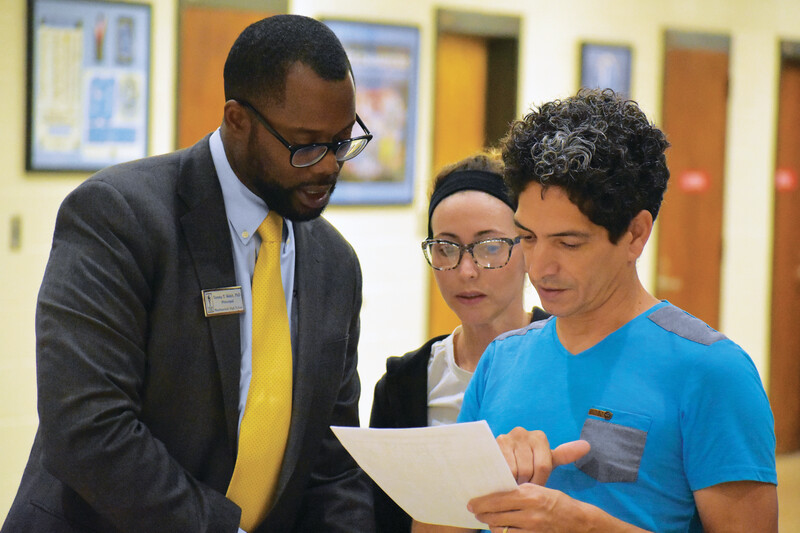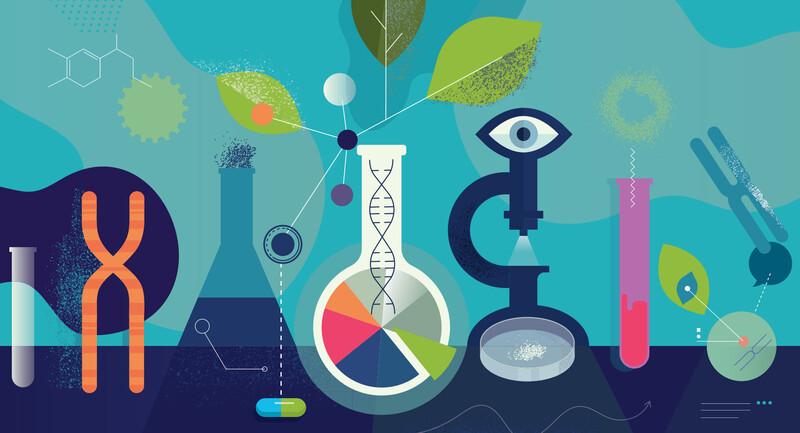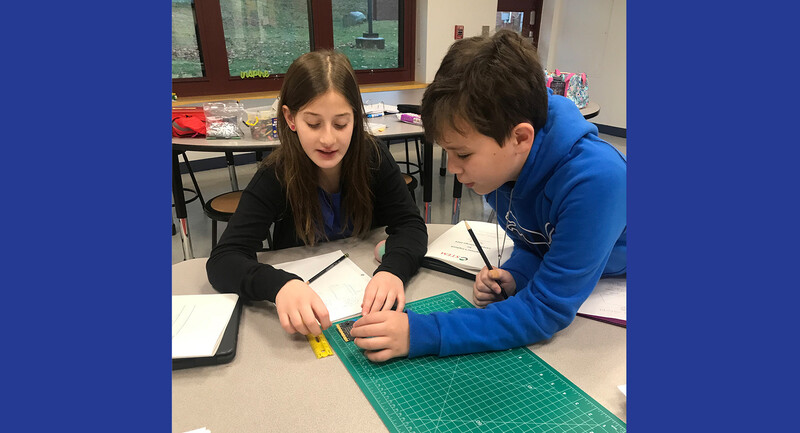Rachel Owens had four years of experience when she joined Two Rivers Public Charter School in Washington, D.C., as a new kindergarten teacher. She excelled at teaching reading and using academic-assessment data to adjust her instruction. However, she was still a newcomer at Two Rivers, an EL Education network school where there is an equal focus on academic performance and ethical citizenship. Like her kindergartners, Owens needed to adapt to this new environment by learning strategies for developing students' character as well as their academic understanding and skills. Fortunately, just when Owens joined the faculty, the school's instructional leadership team, including administrators and teacher leaders from an array of departments and grade levels, began to implement a strategy called Collaborative & Proactive Solutions (CPS), based on education author Ross Greene's work at the nonprofit Lives in the Balance. At the core of this strategy is the belief that every student has a "noble story," the desire to do well in school and succeed in life. Teachers operationalize this belief by conferencing with students who have challenging behaviors, teaching them the social-emotional skills they lack, and, together, creating an action plan that enables the student to make better classroom choices. To support Owens and other teachers' efforts to implement CPS, instructional leaders, in collaboration with Director of Curriculum and Instruction Jeff Heyck-Williams, designed a strategic improvement plan that combines intensive professional learning with structured protocols in which teachers collect, analyze, and revise their practices based on data from their own classrooms. Their plan employed techniques described in the EL Education book Leaders of Their Own Learning (2014), including identifying learning targets, looking at data, making an action plan, assessing results, and presenting their learning publicly.
According to Heyck-Williams, just as these techniques engage and empower students, they are equally transformative for teachers. "When teachers are clear about their targets and use data to see where they are in relation to the targets, they are more motivated and intentional about their teaching," he said. "Student achievement—both academic and social-emotional growth—is the proof of teacher improvement."
Focusing on a Goal
The process of school improvement at Two Rivers and other EL Education schools begins with setting goals in response to a broad array of quantitative and qualitative data, including school climate surveys and interviews with teachers or teaching teams. In 2017, Two Rivers' data dive revealed, among other things, that the number of students who were suspended remained stubbornly unchanged and that too many students were losing instructional time because they were out of the classroom for disciplinary reasons. This raised many questions for leaders, including:
Do suspensions reflect low classroom engagement?
Are some demographic groups disproportionately represented among the students who are out of the classroom?
How are our instructional practices engaging or not engaging students who are leaving the classroom?
Does missing class time for disciplinary reasons reflect the teacher's classroom management or relationship-building skills?
How are teachers' unconscious biases impacting their responses to students and their instruction?
Instructional leaders decided to look more closely at these questions, and crafted an ambitious goal to reduce the amount of time students were out of class for behavioral reasons.
In collaboration with teachers, Two Rivers leaders crafted three teacher-friendly learning targets:
I can demonstrate the beliefs that students want to do well and that supporting social-emotional growth is my responsibility.
I can collaborate with a student to solve a persistent problem.
I can reflect on the process of problem solving with a student.
This sequence of learning targets was designed to give teachers like Owens specific skills to aim for as they worked on new strategies for keeping all students in class rather than sending them to the office. Leaders dedicated three hours each week to professional learning, unencumbered by meetings, lesson planning, or non-instructional duties. The first few sessions were structured to build background knowledge and support teachers to reflect meaningfully on their own practice. Teachers read excerpts from Greene's Lost at School (2014) and explored their own perceptions, assumptions, and triggers in response to challenging behaviors and the students who exhibit them. Steeped in deeper understanding and empathy, teachers constructed their students' noble stories. Rachel Owens's reflection on her interactions with one particularly challenging kindergarten student, whom we'll call James, appears in Figure 1.
Figure 1. Classroom Observations for James's Engagement in a Lesson
Braced with new knowledge and a new mindset about building students' social-emotional skills, Owens and her colleagues returned to their classrooms to try out and assess an action plan of their own making. They were expected to videotape themselves implementing the strategies they had learned and gather data to show the results. Later, they would share those data with colleagues and analyze them collaboratively to determine next steps. (Teachers at Two Rivers regularly share and discuss their own unfiltered data—student work, classroom observations, or assessment results—with powerful implications for teacher growth.) Owens's data showed that in a typical lesson, 15 of her students were able to give their attention and effort to a task and monitor their own understanding, but five were not. From these five, she chose James as the case study for her research and created an action plan for implementing a CPS conference with him. (See Figure 2, which shows her reflection, and Figure 3, which shows her action plan).
Figure 2. Owens's Reflection
Part 1—What is the self-limiting story? What do you say to yourself when the behavior occurs, and how does that self-talk shape your response?
"This behavior isn't that big of a deal or worth the risk of damaging our relationship. He is doing the best he can."
My response: I ignore or don't follow up on behavior because I don't want to cause a major reaction. Sometimes I think it's unreasonable or unrealistic for James to meet high expectations.
"This student is struggling because he isn't invested in the work. He doesn't like reading."
My response: I rationalize why it isn't worth investing in James and then hold him accountable for compliance rather than engagement.
"There is one right way to be the adult or teacher. I need to teach like that."
My response: I miss opportunities to authentically connect with and listen to James because I'm focused on teaching in the one right way.
Part 2—How do I manage my triggers?
Being aware of triggers is the first step to managing them. Just as James is struggling with social problems, I am struggling with my own responses to James and their impact. For example, I wanted him to move around calmly, but he is bounding from place to place. This triggered me because he is high energy and I function at much lower levels of energy. I felt anxious, stressed, and worried about how he was going to display that energy. If I am transparent and we analyze our struggles together, I hope I can help him see how we can both overcome our challenges.
Part 3—What is the noble story for this student?
James loves being a part of the group, but he doesn't yet have the skill to appropriately access group activities. I want to help him learn to manage his impulses to talk, touch, or help so that he continues to develop his love for school.
Figure 3. Owens's Action Plan for Conferencing with James
Step 1: Set the purpose of the conference:
"Let's talk about what happened before the drama" (he kicked over a chair when I sent him back to his seat).
Step 2: Share what you notice about the challenge with the student:
"I notice that it can be hard for you to listen to the direction." "I notice that it is hard for you to go back to your desk when you're upset."
Step 3: Mirror back what the student is saying, then probe for more:
"I hear you saying … is that right?", "Sounds like you're feeling …", "Can you tell me more/give me an example?"
Step 4: Listen and probe: "Why do you think the challenge is happening?"
Step 5: Summarize, say thank you, outline next steps.
Confidence-Building with Colleagues
Owens put her plan into action and videotaped her initial conferences with James. The following week, she participated in a "no blame, no shame" consultancy with three colleagues from other grade levels. She shared the video of herself holding a conference with James, as well as her conversation notes. She also shared her own insights about the conference, including what she heard the student say and what that made her think about. Then she tweaked her action plan in response to colleagues' feedback that she did a little too much of the talking during the conference.
"When we watched the video," she said, "we noticed that James has a lot more insight into his own behavior than I had given him credit for. I was assuming since he has trouble regulating his own attention that he is not paying attention to the way he is feeling or the things he is doing. But he was very clear that his brain is telling him to do something other than what the class is doing." She committed to doubling down on the collaborative conference strategy and to let James do most of the talking while she listened for information.
Gathering data about her interactions with James and getting ongoing feedback from colleagues and instructional leaders motivated Owens to revise and polish her CPS techniques. As the school's focused professional learning sessions unfolded throughout the semester, she spent more and more time in purposeful consultancies with instructional leaders and colleagues as thought partners—fueling even further revisions.
At the end of the year, the entire faculty came back together and instructional leaders made time for Owens and her colleagues to synthesize and debrief their learning. Teachers named their takeaways for the year, celebrated progress, and identified how their learning prepared them for the following year. They were encouraged to share both their story and their data publicly. Owens, for example, wrote a post about how changing her practice had impacted students in her classroom for Education Week's Next Gen Learning blog. The deliberate process of working toward her learning targets by building her understanding and skills, testing out strategies in the classroom, and discussing and sharing her results with colleagues transformed Owens's experience of professional learning. "There are so many things thrown at teachers with the tagline "do this, and you'll get this result,"" she says. "I was skeptical when I started the year, but the problem-solving conference strategy really did work."
Because she collected data from her own classroom in real time and was given time to confer about those data with other teacher colleagues and integrate the data into her own teacher story through writing and publishing, Owens was motivated to keep trying. Her conferences with James also improved, and he got better and faster at creating his own solution so that he could focus on reading, math, or writing.
Leading for Impact and Growth
For Owens, building even one student's social-emotional toolkit matters deeply, and developing new engagement strategies holds the promise of increasing students' achievement in the future. But instructional leaders at Two Rivers are looking for a broader, schoolwide impact. To help with that goal, all 100 of Two Rivers's teachers participate in two data-analysis strategy implementation cycles per year, and this collective growth mindset impacts students' achievement across the school and over time.
For the 2017–18 academic year, the team wanted to know if the Collaborative & Proactive Solutions conferences were decreasing disciplinary actions and time out of the classroom. They conducted another data review and discovered in May that the amount of time out of class for disciplinary conferences had fallen 15 percent since January. Moreover, teachers and leaders were able to use the disaggregated data to deeply examine the relationships between the macro-level schoolwide data that leaders were analyzing and the micro-level classroom data that teachers had generated.
In the end, they concluded that teachers had made some progress in problem solving challenging behaviors with students. And, returning to the questions raised by their data at the beginning of the year, they committed to using the following year's professional learning to address the deeper issue of unconscious bias and its impact on instructional and disciplinary practices. Collectively aiming at a new set of learning targets, teachers this fall will use the same recursive process—reflecting and understanding, analyzing data, taking action, measuring impact, sharing their learning—to implement further improvements in their instruction.
Getting better together through this kind of shared leadership is challenging work, but it is also fundamentally collaborative, respectful, purposeful, and deeply rewarding. In the Educational Leadership article, "The Power of Collective Efficacy," Donohoo and colleagues write, "When a team of individuals share the belief that through their unified efforts they can overcome challenges and produce intended results, groups are more effective" (2018, p. 40). Owens agrees. "Everyone at Two Rivers leads by example. We learn from each other, we are grounded in the same mission, and everyone expects both staff and students to achieve." Instructional leadership that is steeped in curiosity and mutual respect for each student and teacher's story is work worth doing—work that enables leaders and teachers to walk their talk and to see their efforts become action that gets results. 







